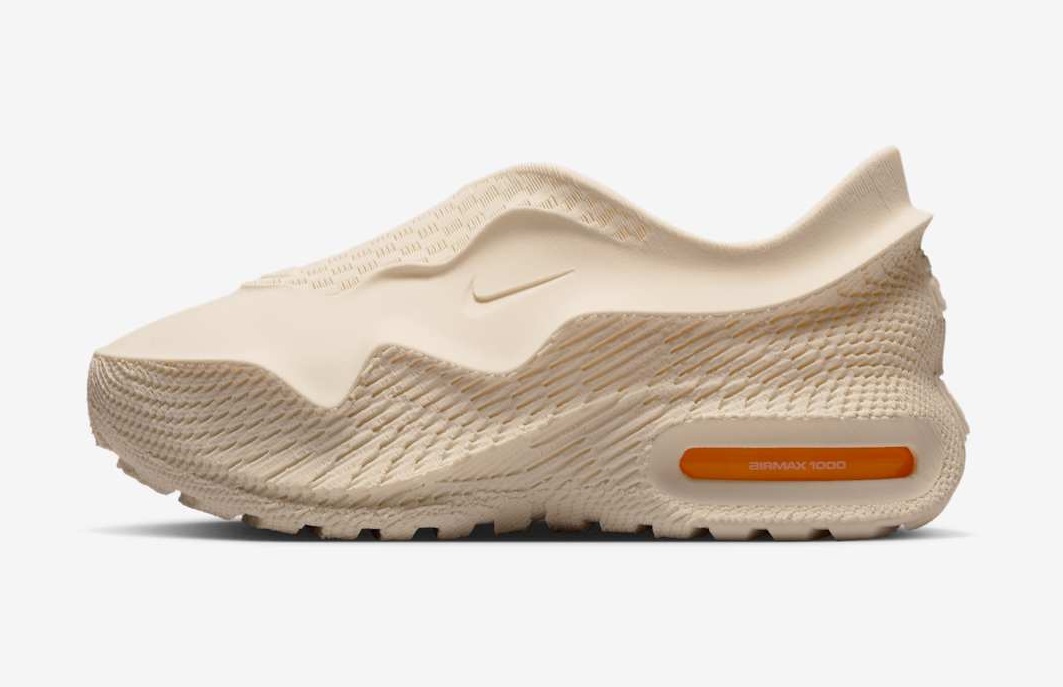Physical Address
304 North Cardinal St.
Dorchester Center, MA 02124
Physical Address
304 North Cardinal St.
Dorchester Center, MA 02124

At last year’s ComplexCon, Nike quietly pulled the curtain back on something genuinely interesting. Not a celebrity endorsement or a minor colorway tweak, but a full-blown reinvention of one of its most iconic silhouettes using additive manufacturing.
Enter the Nike Air Max 1000, a shoe developed in collaboration with Zellerfeld, the German company known for producing fully 3D printed footwear. If that name rings a bell, it’s because Zellerfeld has also worked with high-fashion brands, artists, and one or two crypto-leaning startup labels trying to convince the world that digital design equals value. But this one is different. This one actually works.
The Air Max 1000 takes its inspiration from the original Air Max 1, which first dropped in 1987. That shoe introduced the world to visible air cushioning, and helped establish Nike as a design-forward brand in the athletic space. The 1000 version brings the same spirit of innovation, but replaces traditional assembly with a single-piece 3D printed construction, built entirely from foam using Zellerfeld’s proprietary process.
Rather than hiding the 3D printing origins, the design embraces them. The midsole features a textured, pocked surface that’s reminiscent of what you might see during a paused FDM print. It is, in essence, a kind of reverse engineering of sneaker aesthetics. Even the branding feels purposeful. There is a clean embossed “AIR” on the heel, along with an embedded Air bubble, which adds both functionality and a visual nod to its heritage.
The first version that caught public attention was a bold red prototype. Striking, yes, but not exactly an everyday look. Fortunately, a more accessible colorway is now heading to market. The “Oatmeal” version features a soft beige body paired with a bright orange Air unit. It is much more wearable and feels like Nike’s way of saying, “Yes, this is a real product now.”
Retail is expected to be around $210, with a tentative release planned for Summer or Fall 2025. Considering the fully printed construction and the Zellerfeld collaboration, that price point is surprisingly reasonable.
It has taken over six months to get from unveiling to release, but it looks like the era of fully 3D printed, performance-oriented sneakers is finally about to begin.
And this time, it might actually stick.